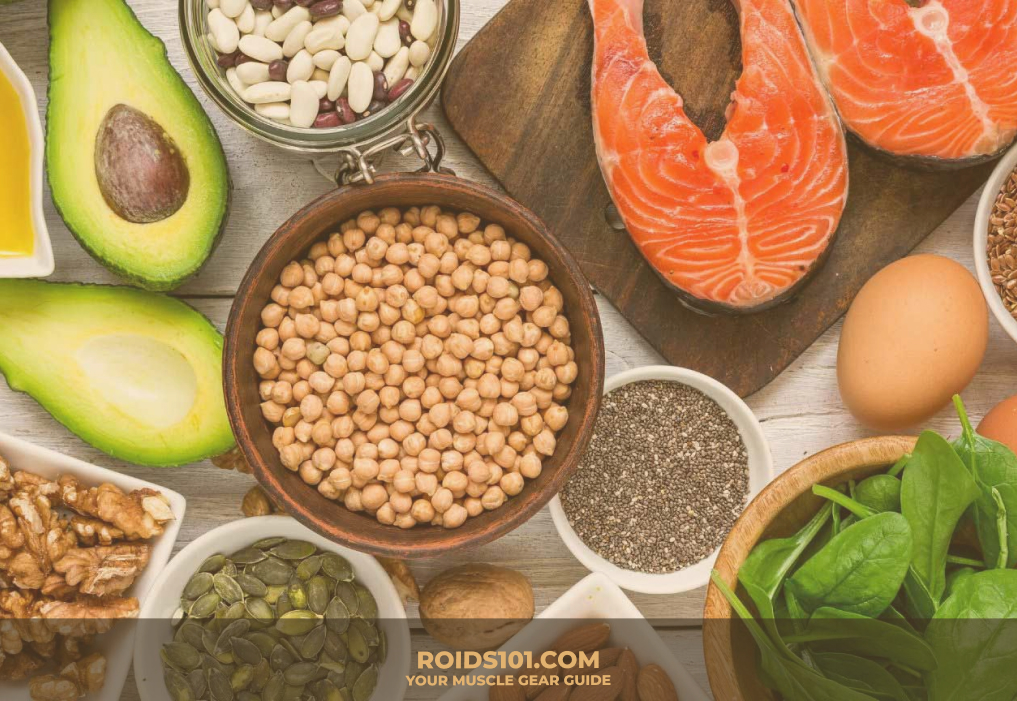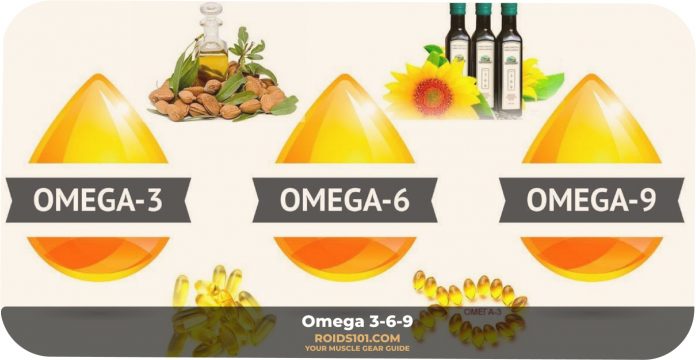According to research, Omega-3 and fish oil form a 10 percent share in the total amount of consumed supplements. The most consumed supplements are vitamin complexes, which account for 32%, and calcium supplements, which account for 12%.
Here we shall have a look at issues related to Omega-3-6-9, the properties of UFAs, the differences between polyunsaturated fatty acids (PUFAs) and others.
Types of UFAs & Effects
The role of fatty acids is enormous, for they are considered as:
- cell membrane element
- primary component of fat deposits
- regulator of inflammatory processes
Moreover, they are divided into the unsaturated and saturated FAs. The latter are found in meat and tropical plants, they usually harden and remain solid even at room temperature. Unsaturated fatty acids (UFAs) are contained in vegetables, fish oil and grains. Almost all of them are liquid in normal conditions.
UFAs, in turn, are divided into types of fats. Polyunsaturated (hereinafter referred to as PUFAs, omega-3, omega-6) and monounsaturated (hereinafter referred to as MUFA, omega-9).
Omega-3 Fatty acids
The most important Omega-3 UFAs include docosahexaenoic (DHA), eicosapentaenoic ( EPA), and α-Linolenic (ALA). The last one is the most important UFA, it is necessary for it to be present in your food.
Even though the body is able to process basic acid into EPA and DHA, it does little for the desired result. It is critical to consume them along with food, for they affect central nervous system development. Moreover, these acids helps to address inflammation processes and prevent them
There are suggestions that Omega-3 supplements help in the treatment of neurological disorders and inflammatory diseases. Upon research, however, it was discovered that there is another effect. Only one case bore fruits. It was also discovered that DHA and EPA help to treat arthritis, when these UFAs are present in the diet on a regular basis. Some patients don’t even need any additional pharmaceuticals.
Omega-6 Fatty Acids
Usually, these fatty acids are contained in foods with linolenic acid. The latter takes part in the conversion of Omega-6 into arachidonic acid. Together with EPA, it is the prototype for eicosanoids.
However, these molecules increase the inflammatory processes, as well as be able to provoke pain during fevers. Eicosanoids from EPA, on the other hand, have anti-inflammatory action. That is why the balance between those types of molecules need to be sustained. If the part of Omega-6 from food is bigger than the part Omega-3, there is inflammation occurring.
Omega-9 Fatty Acids
They originate from animal fat and vegetable sources. The main type is oleic acid, contained in nuts, animal fats, olives and grains. The role of Omega-9 in the body is not quite important, so there is no particular need to take supplements with it.
The balance between Omega-3 and Omega-6
These UFAs are components of cells, fluctuations in their shares in the body and the composition of FAs in food are directly related to the concentration of FAs in cell membranes. Therefore, the balance between them directly affects FAs concentration in cell membranes, which in turn affects the proportion of different types of eicosanoids.
The correct ratio is considered to be 2:1, with Omega-6 being predominant. Sadly, due to the dominance of Western type of diet enriched with vegetable oils, this ratio now is 20:1.
To make the ratio of UFAs correct again, the amount of Omega-3 consumed should be increased. The same effect can be achieved through reducing the amount of Omega-6. Well, the trick is simply to consume less Omega-6 and more Omega-3.
Sources of Omega-3-6-9

Since Omega-3-6-9 supplements are not being generally recognized, you can adjust their ratio through diet. For that, you have to know which foods contain them.
Omega-3 UFAs are mostly found in seafood and fish:
- herring
- salmon
- swordfish
- sardine
- tilapia
- halibut
- mussels
- mackerel
- flounder
they can also be obtained from plants:
- seeds (hemp, flax, sesame)
- nuts (hazelnuts, walnuts, pecans, almonds)
Omega-6 UFAs are contained mostly in vegetable oils, such as sunflower and corn
Omega-9 UFAs can be found in olive oil and animal fat.



